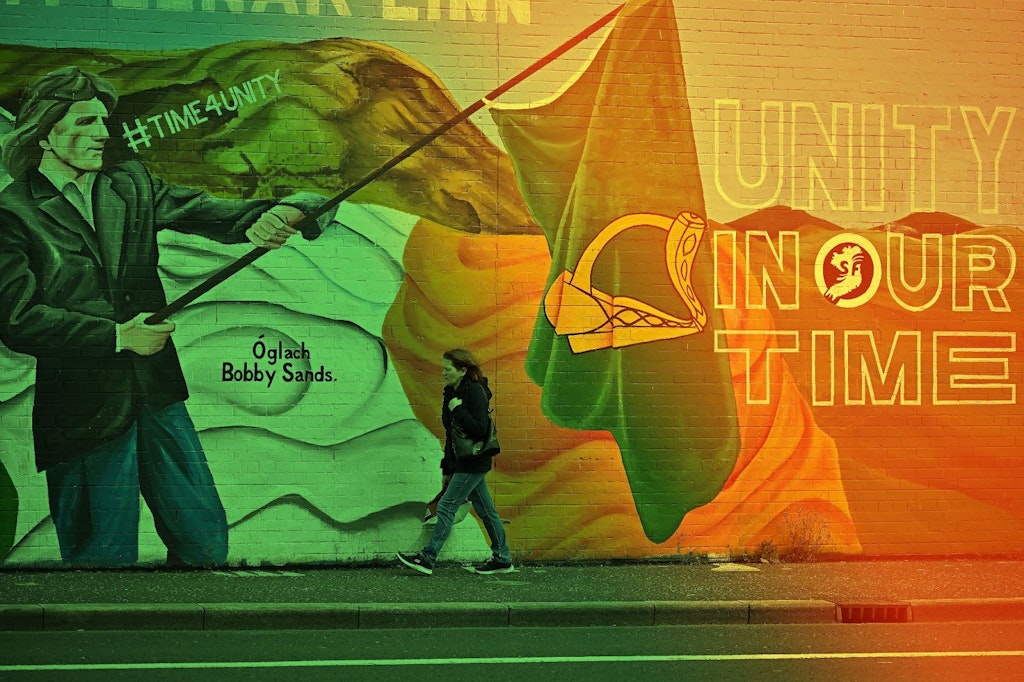Leo Varadkar is still stirring division
The former Taoiseach should have more humility
Last week, Leo Varadkar, former head of government of the Republic of Ireland, visited Londonderry to campaign for Northern Ireland’s annexation by the Irish republic. This “New Ireland Commission” event was organised by the SDLP, the nationalist party that sits on the government benches alongside Labour, and its audience was made up of local school children — because Ulster badly needs a newly indoctrinated generation of separatist agitators.
In an interview with the Irish Times, to mark his appearance, the one-time Taoiseach claimed that political parties in Dublin should see the province’s take-over as an objective rather than an aspiration and they should include it in their election manifestos. He even suggested that an official commission should be established in the south, to draft a plan for dislodging Northern Ireland from the UK.
This intervention was not surprising, even if it showed a characteristic lack of self-awareness and revealed several layers of irony.
In April, Varadkar left office, humiliated by two referendum defeats and widely loathed by the Irish public, who came to see him as a symbol of the Dublin elite’s indifference to their everyday concerns. At the time, the outgoing Taoiseach expressed hope that people in Northern Ireland, at least, might soon reassess the view that he was a divisive figure.
It now appears he’s attempting to achieve that objective through destabilising interventions on Ulster’s most controversial question.
Indeed, Varadkar seems determined to confirm unionists’ thesis that he was a hostile Irish prime minister, who attempted a land-grab over this part of the UK during Brexit negotiations. That view was strengthened by influential nationalists who believed the Taoiseach was committed to their goal of a “united Ireland”.
His party, Fine Gael, was previously considered less republican and anti-British than its rival Fianna Fail. Under Varadkar and his sidekick, Simon Coveney, those perceptions started to change. The late RTE journalist Tommie Gorman described him as “the most pro-unity leader in Fine Gael’s history”.
It is scarcely a generation since the IRA tried to bomb and shoot Northern Ireland’s people out of the UK. Against that backdrop, the fact that a recent Taoiseach is prepared to campaign publicly for the province’s annexation is divisive at best and could properly be regarded as a reckless provocation.
In order to make unionists feel better, though, about potentially being wrenched from their nation against their will, Varadkar proposed that someone from a pro-Union background could be appointed deputy president of the enlarged Irish state (the president is already a symbolic position). And in case that proposal did not get loyal British hearts in Ballymena or the Shankill pumping faster, he tempted them with the prospect of a triumphalist, 32-county “Dail” sitting occasionally in the parliament buildings at Stormont.
If anything, it confirmed that Varadkar is involved in an Irish separatist crusade that is simply not grounded in the real world.
In the wake of Brexit, several nationalist groups formed, with the idea that the referendum result proved one last push was needed to remove Northern Ireland from the United Kingdom. This campaign was disguised as a “debate” or “conversation” about the island’s future. And its supporters claimed they wanted to “reach out” to unionists, in a bid to include them in the inevitable process of “constitutional change”.
Actually, the organisations were composed largely of the same people who for decades had tried to break up the UK, through violence, politics or a mixture of the two. Their so-called outreach to unionists quickly turned to abuse and ridicule when pro-Union voters showed no interest in discussing Northern Ireland’s abolition.
The event in Londonderry was organised by the SDLP, which is less ambitious than some republicans about the timetable for a referendum on the border. But Varadkar has also attended rallies organised by Ireland’s Future, whose board is slanted heavily toward Sinn Fein and its sympathisers.
That is effectively the company he is now keeping. And, as if to reinforce this point, the president of Sinn Fein, Mary-Lou McDonald, congratulated the former Taoiseach on discovering his “inner Shinner”, after last week’s event.
The former Taoiseach should be showing more humility during his enforced retirement from front-line politics
The BBC, and other media outlets in Northern Ireland, have given separatists every assistance in trying to turn their campaign into a real debate, by devoting endless hours of broadcasting to this topic. Despite all that propaganda, the province’s voters have remained committed to a future within the UK, according to every credible poll. And the people of the Republic, while they share Varadkar’s enthusiasm for annexation in theory, are not prepared to pay extra taxes or change Ireland’s emblems, even slightly, to make it happen.
The idea that Northern Ireland will be voted out of the UK in a referendum on the border, as separatists ultimately want, remains unlikely. At the same time, Varadkar’s sea border showed nationalists that they could erode British sovereignty in the province without seeking a democratic mandate to change its status.
This destabilised politics in Northern Ireland so seriously that the DUP boycotted Stormont for two years. And it remains the biggest source of political uncertainty in the province. Rather than persuade unionists that there is no genuine threat to their place in the UK, Varadkar seems determined to make them feel more threatened and besieged.
The former Taoiseach should be showing more humility during his enforced retirement from front-line politics. Still, we can at least be thankful that he is increasingly irrelevant.
Enjoying The Critic online? It's even better in print
Try five issues of Britain’s most civilised magazine for £10
Subscribe














